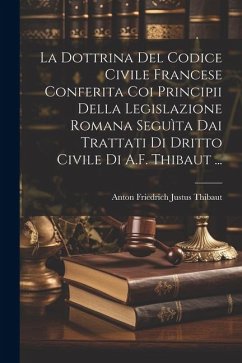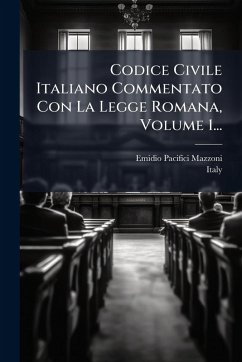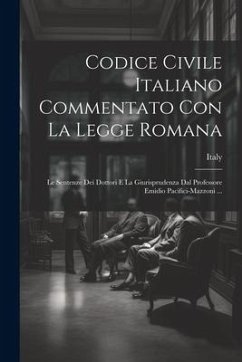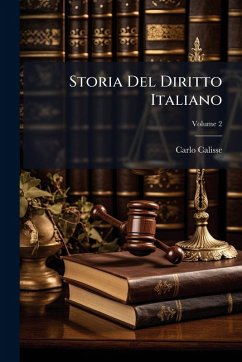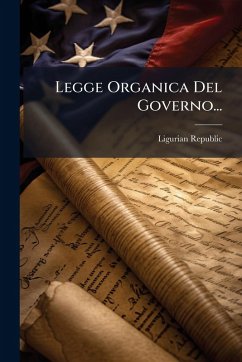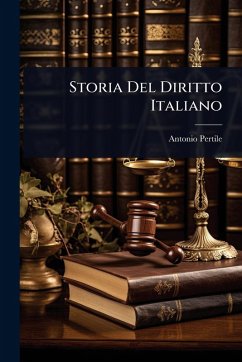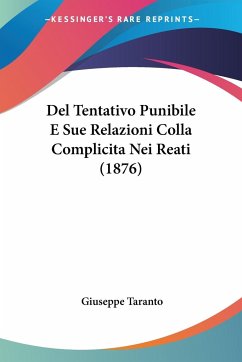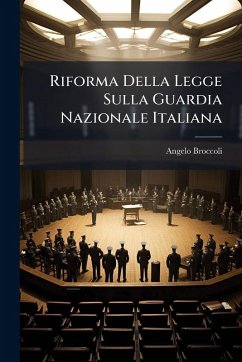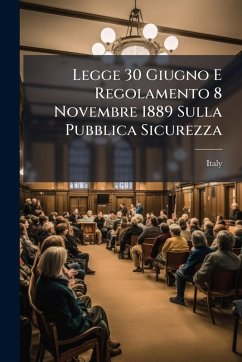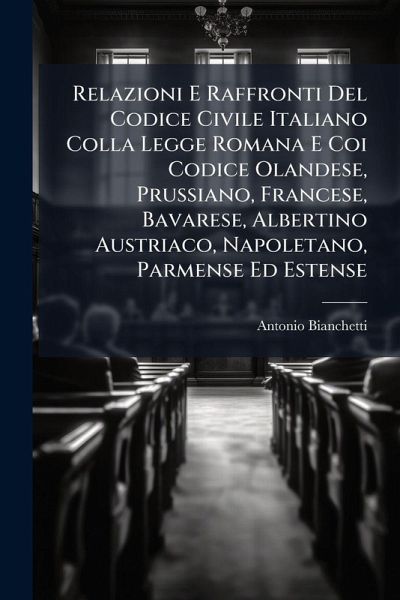
Relazioni E Raffronti Del Codice Civile Italiano Colla Legge Romana E Coi Codice Olandese, Prussiano, Francese, Bavarese, Albertino Austriaco, Napoletano, Parmense Ed Estense

PAYBACK Punkte
14 °P sammeln!
Relazioni E Raffronti Del Codice Civile Italiano Colla Legge Romana E Coi Codice Olandese, Prussiano, Francese, Bavarese, Albertino Austriaco, Napoletano, Parmense Ed Estense, by Antonio Bianchetti, offers a detailed comparison of the Italian Civil Code with Roman law and various other European legal codes including Dutch, Prussian, French, Bavarian, Albertino Austrian, Neapolitan, Parmesan, and Estense codes. This comprehensive study highlights the relationships and comparisons between these legal systems, providing valuable insights into the historical development and influences on Italian c...
Relazioni E Raffronti Del Codice Civile Italiano Colla Legge Romana E Coi Codice Olandese, Prussiano, Francese, Bavarese, Albertino Austriaco, Napoletano, Parmense Ed Estense, by Antonio Bianchetti, offers a detailed comparison of the Italian Civil Code with Roman law and various other European legal codes including Dutch, Prussian, French, Bavarian, Albertino Austrian, Neapolitan, Parmesan, and Estense codes. This comprehensive study highlights the relationships and comparisons between these legal systems, providing valuable insights into the historical development and influences on Italian civil law. With references to similar legislative provisions in force within the Kingdom, this work serves as an essential resource for legal scholars, historians, and anyone interested in understanding the foundations and evolution of civil law in Italy and its connections to the broader European legal tradition. Bianchetti's meticulous analysis makes this book a significant contribution to comparative legal studies and a valuable addition to any legal history collection. This work has been selected by scholars as being culturally important, and is part of the knowledge base of civilization as we know it. This work was reproduced from the original artifact, and remains as true to the original work as possible. Therefore, you will see the original copyright references, library stamps (as most of these works have been housed in our most important libraries around the world), and other notations in the work. This work is in the public domain in the United States of America, and possibly other nations. Within the United States, you may freely copy and distribute this work, as no entity (individual or corporate) has a copyright on the body of the work. As a reproduction of a historical artifact, this work may contain missing or blurred pages, poor pictures, errant marks, etc. Scholars believe, and we concur, that this work is important enough to be preserved, reproduced, and made generally available to the public. We appreciate your support of the preservation process, and thank you for being an important part of keeping this knowledge alive and relevant.



